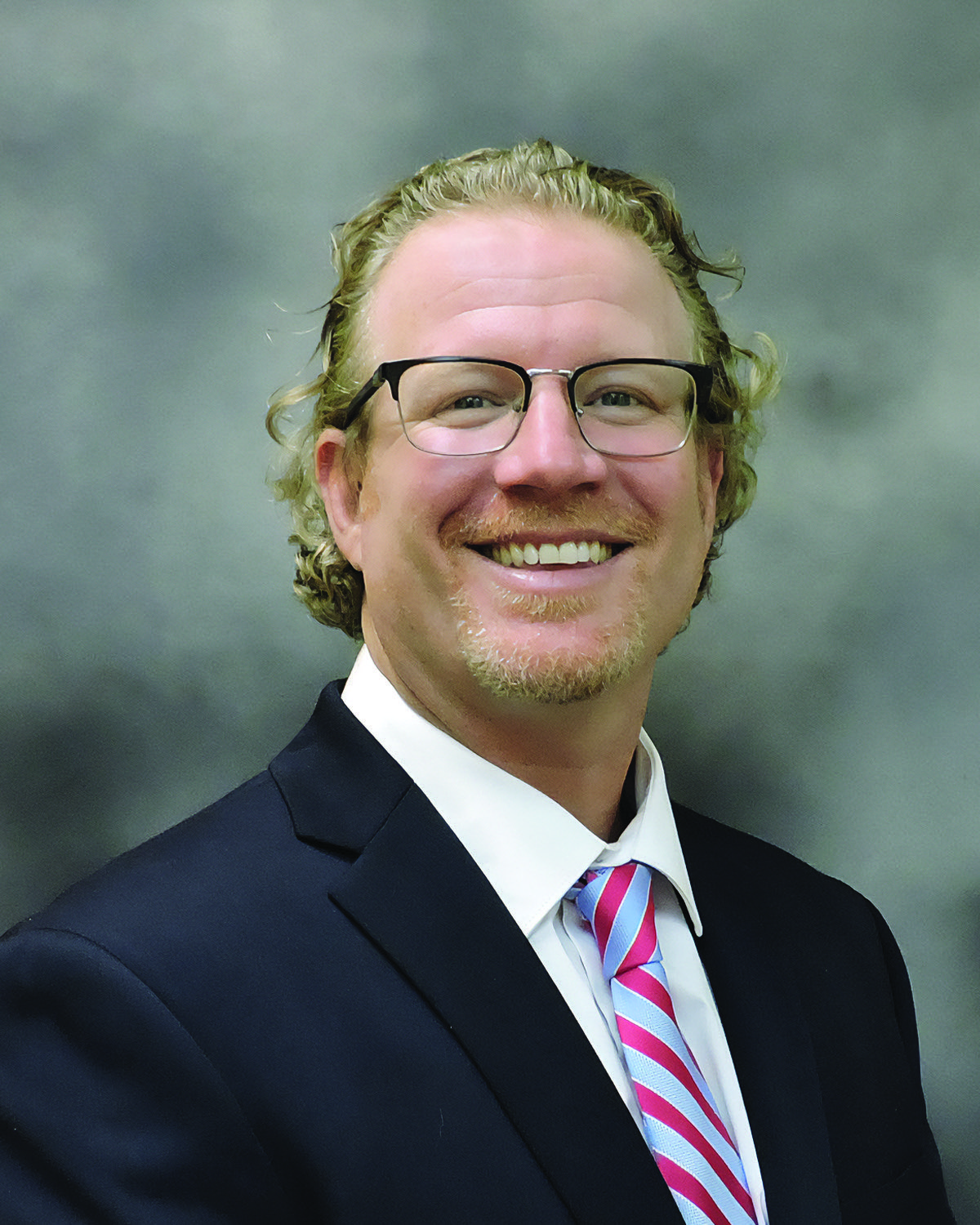Jonah Schenker, superintendent of Ulster BOCES in New York, was the guest for the recent “Closing the gap: Better learning recovery through deeper leadership” webinar (now free on-demand). He talked about what deeper learning looks like, why it makes a difference in learning recovery and how education leaders can create a toolkit for it. Schenker said we must “stop defining learning as something that happens between September and June.”
SmartBrief sat down with Schenker a few weeks later to talk more about reimagining education. This is part one of two. (Read part two.)
SmartBrief: I understand this is your first year as superintendent of Ulster BOCES. Can you give us some background on your career history in education and what drew you to this role?

Jonah Schenker: If I trace this all the way back, it starts with me figuring out who I was as a student and thinking about where I found engagement and joy in my own journey. That fueled my trajectory of continuing my education through a nontraditional pathway. About two years through undergrad, I veered off and began to explore the world through independent study, then later finished my undergraduate degree and worked for a while. Those experiences set the stage for me thinking about how there’s more than one way to get to Oz, if you will.
I had an opportunity to create a small school in Brooklyn, N.Y. It was for over-age and under-accredited youth. It was a magnificent experience. The school was student-centered and co-constructed with teachers. Together, we routinely challenged the norms of working with our population.
Eventually, I worked as a teacher in Dutchess County, N.Y. From there, I began my leadership journey, and I did my master’s and my certificate of advanced study in educational leadership. Halfway through that program, I was hired at Ulster BOCES as a staff developer and administrator. I worked as an assistant principal, opened a new school as a principal and eventually became the deputy superintendent, which is when I started thinking differently and more deeply about how we were going about educating our students. I began asking: How can we translate the kind of impact we have in a classroom into an entire system?
At the same time, I was completing my doctoral work on leadership, and our previous superintendent, Dr. Charles Khoury, was deservedly retiring after a 50-year career in education. So I said, “This is my opportunity to put my vision for reimagining education into place.” And here I am, at the end of my first year as superintendent.
SmartBrief: What’s your vision for Ulster BOCES? What challenges do you want to address, and what goals do you want to achieve?
Schenker: Over the last decade of his leadership, Dr. Khoury gave me a pivotal gift: He helped me realize that we needed to lift our heads up out of our small county and take a peek at what else is out there in the state, the country and the world. There are all of these other educators out there trying to solve the same problems we are. Unless we look around to see what’s out there, we will be stuck in this small eddy of innovation that only knows what it knows.
He set us up, as he retired, to look at all these things we’d seen in other systems. We began asking ourselves 1) who we want to be at Ulster BOCES and 2) how are we going to actualize this work not only internally for our own programs and services, but also further afield, with our unique ability as a BOCES to work with our component districts?
As a BOCES, we serve as an arm of New York State and as a partner to our component districts to drive professional learning for educational leadership and classroom teaching, along with providing many other services.
As the school year comes to a close, many district leaders are ready to begin what we have traditionally thought of as strategic planning. Our experience has shown us that this model of strategic planning doesn’t suit our needs as it suggests; perhaps is just perpetuating things as they are; and often lacks the acknowledgment that change is needed. What we’re working on as an agency are theories of change and theories of action to put our planning into the form, “If we do x, then y will happen. Here’s what we are going to do. Here’s how we are going to measure it. Here is the impact we expect to have on students. Here is the cost of it.” We always ask if any plan, program or initiative is fostering our learners’ unique selves and building our community. Is it developing capacity? Is it part of continuous cycles of inquiry? If not, we must ask ourselves why we’re doing it.
SmartBrief: How do you navigate Ulster BOCES’s role with its own schools as well as the component districts you serve?
Schenker: There are a couple of pieces that are important to highlight. We are their partner in success and an additional support system for their educators, schools and students. There are certain things that come from the New York State Education Department to the field, and our role in that is to make sure our component districts have access to what they need to actualize those obligations within their systems.
We have a responsibility — because of the nature of BOCES and the flexibility we have — to create a bit of an incubator for some of the areas where we know education needs to change so that we can show by example, point them to other systems making those changes or create offerings that bring that change in.
A concrete example of this is the literacy wars. Some folks were already teaching in a way that was aligned to the science of reading, and others were just looking at it. We have a responsibility to bring evidence-based learning to educators in our system and our component districts to say, “Here’s the approach. Let’s talk about it. What does this look like? What questions do you have?”
In general, schools were built for the Industrial Revolution and are largely still based on that model. The teacher’s role has been to stand at the front of the class and be the primary source of information. How should that change in an era of widely available information? What are the other mechanisms we can employ as their role is reimagined to support learners of today and tomorrow? Is it process-based learning and place-based learning? What does assessment look like? Is numeric grading relevant and really about equity, or are there other ways we could get at that?
We can be piloting innovative things and implementing them in our own models so that we can say, “Hey, look at what we’re doing for our shared students.” As that interest pool grows and we have two, three, four districts saying, “Let’s build out more opportunities for students to engage in that kind of learning,” then we can come in and look at embedded professional development models, for example, to help districts move forward effectively.
It’s a balance of understanding that they know their own needs and supporting them in their vision while bringing in ideas and resources that we believe can dovetail nicely to help meet those needs and stretch toward more growth so that we’re all continuously growing.
SmartBrief: How are you promoting career and technical education and otherwise preparing students for today’s workforce?
Schenker: Career and technical education is huge, as we see in the recommendations made to the New York Board of Regents by the Blue Ribbon Commission on Graduation Measures. These serve as what the recommendations calls a “road map for learning-centered education that … incorporates competency imperatives that provide all students with the practical skills needed for the dynamic demands of tomorrow’s workforce.” The third recommendation makes these kinds of experiences — such as integration with real-world workforces, partnerships and formal career and technical education — a priority for all students.
This is about shifting the narrative. No longer can it be the status quo of traditional college for those who can and all of these other options for those who can’t. All options are on the table right now, whether it’s a four-year degree, a certificate, joining the military or an apprenticeship. The narrative has to change so that all of those are definitions of success, because they can all lead to viable post-secondary experiences and livelihoods.
At the core, this is about workforce development, and we should be talking about economic and workforce development not as a separate lane, but as a kind of diversity, equity and inclusion work. All students, regardless of their interests or the pathways they choose to pursue, deserve the opportunity to see themselves having a vibrant future with multiple options to support a family, own a home and be a member of the community in the very place they grew up. There are many other components of DEI work; we chose to prioritize this one.
We are engaged in a massive program expansion that will allow us to redefine how we think about CTE as we look at developing a new, large, high-tech school in a former IBM site. We’ll be able to repurpose our current facility for a special education-focused, P-TECH middle and high school with a project-based learning environment.
I believe it is this initiative, coupled with our county’s workforce development, our two-year college, our four-year college and collaboration with industry partners that will make our program the beacon of what’s possible in our region. The tragic flaw of economic and workforce development is not the people. We have amazing people doing amazing things. The fatal flaw is alignment. It’s about failing to understand that we need to center students, not adults.
If we center students, we’re building for the future. If those roots are intact and healthy, then all the other pieces — where college fits in, where credentialing fits, where four-year colleges and county supports fit — grow from that base. Right now, in both systems, we’re rowing our own boats and hoping we’ll end up on the same island as we take the first step, which is the integration work of centering our youth.
Read part two of this conversation.
Opinions expressed by SmartBrief contributors are their own.
_________________________
Subscribe to SmartBrief’s FREE email ASCD newsletter to see the latest hot topics in education. It’s among SmartBrief’s more than 250 industry-focused newsletters.
